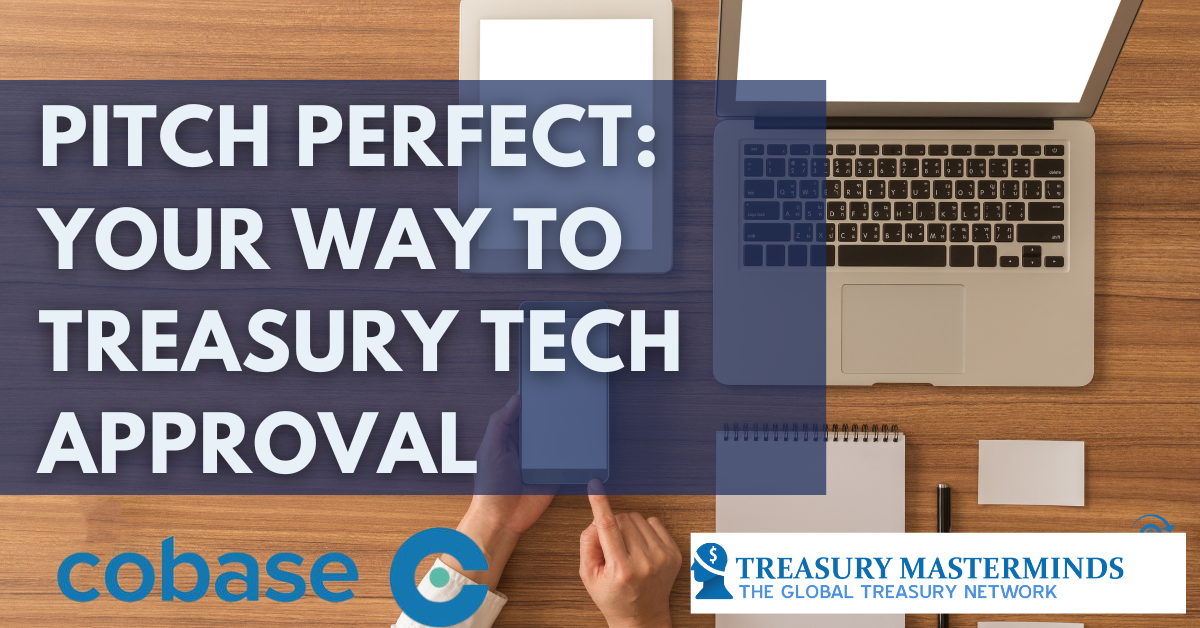
Pitch Perfect: Your Way to Treasury Tech Approval
This article is written by Cobase In the quest to secure approval for Treasury technology investments, the journey from a rough concept to a refined, boardroom-ready proposal is critical. Drawing on the wisdom of industry leaders and management consultants, this article unveils key strategies to craft a Treasury Tech proposal that not only resonates with CFOs and board members but also stands out as a strategic asset. Understanding Boardroom Dynamics Before diving into the specifics of the proposal, it’s crucial to understand the mindset of those who will be evaluating it. Board members and CFOs are primarily focused on strategic alignment, risk management, and ROI. Your proposal should speak to these elements in a language they understand and appreciate. Key Strategies for a Winning Proposal Advanced Communication Strategies Engaging with Emotional Intelligence Leveraging Influencers and Allies Addressing Concerns Proactively Conclusion Crafting a Treasury tech proposal that dazzles in the boardroom is an art that combines strategic alignment, data-driven insights, and a clear understanding of stakeholder priorities. By incorporating these industry-leading strategies, you can refine your proposal from a rough concept into a compelling, strategic asset that is hard to overlook. Remember, the goal is to not just secure approval but also to position the Treasury function as a key contributor to the organization’s strategic vision. Also Read Join our Treasury Community Treasury Masterminds is a community of professionals working in treasury management or those interested in learning more about various topics related to treasury management, including cash management, foreign exchange management, and payments. To register and connect with Treasury professionals, click [HERE] or fill out the form below to get more information. Notice: JavaScript is required for this content.

OPEN: Treasury Mastermind BOARD position
🌟 Join the Treasury Masterminds Board! 🌟 Are you a seasoned treasury expert with a passion for innovation and collaboration? We’re assembling a powerhouse team of treasury professionals to join our exclusive Treasury Masterminds board, and we want YOU! As a member of the Treasury Masterminds board, you’ll have the opportunity to showcase your expertise and be featured as a keymaster in the world of treasury management. We’re seeking individuals with diverse skill sets and regional perspectives, ensuring a dynamic exchange of ideas and insights. What’s in it for you? If you’re passionate about shaping the future of treasury management and eager to share your expertise with the world, we want to hear from you! Apply now to become a part of the Treasury Masterminds board and make your mark on the industry. Interested? Let us know and apply today! Notice: JavaScript is required for this content.
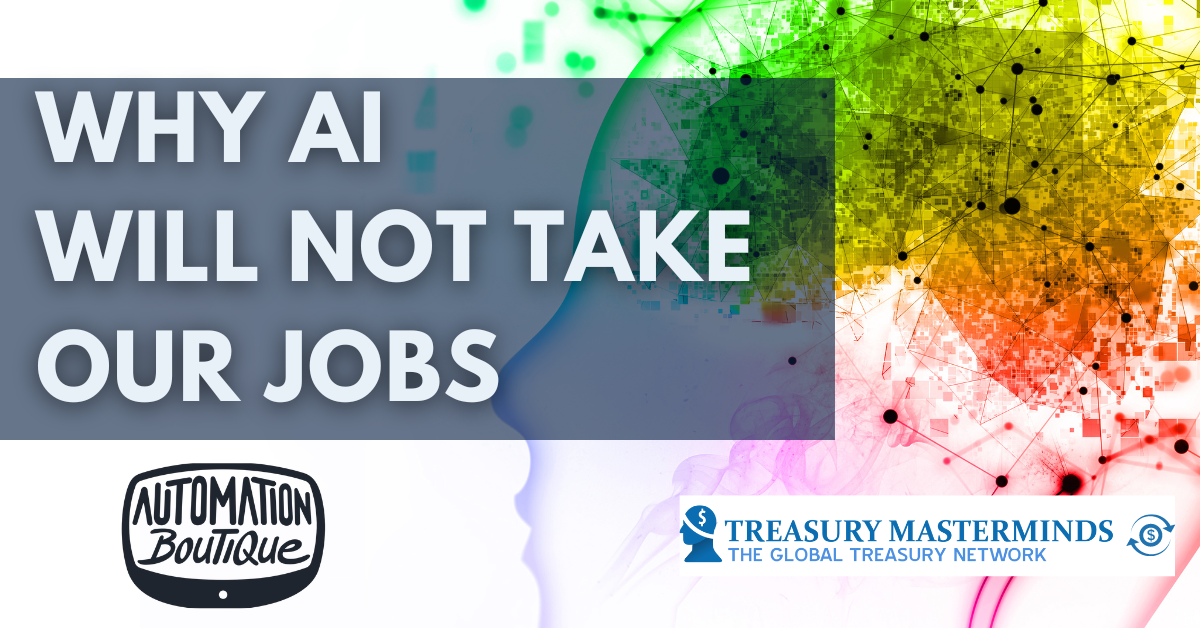
Why AI will not Take our Jobs
This article is written by Automationboutique AI has the potential to automate 60–70% of tasks that employees do today, as estimated by McKinsey & Company in June. But is AI set to replace the majority of jobs? No, it isn’t. A new MIT study sheds new light on the role of AI in automating jobs. The MIT researchers analysed the tasks AI would need to perform to replace jobs. They found that, while AI could technically handle specific tasks, the financial investment is currently too high for most companies. For example, a case study the researchers did shows that automating a part of a baker’s job using AI will be way more expensive than the savings the bakers get from the automation itself (… we think the 🤖 loaf might not taste as good either). This is a situation that we encounter regularly. In those cases, we don’t just look at what can be automated; we carefully weigh whether it should be, economically and ethically. If things don’t add up, we don’t push for automation. It is about finding that sweet spot where humans and AI collaborate, each doing what they do best, improving the workplace, not diminishing it. Having strong principles in place can make all the difference in making the most of new technology. Also Read Join our Treasury Community Treasury Masterminds is a community of professionals working in treasury management or those interested in learning more about various topics related to treasury management, including cash management, foreign exchange management, and payments. To register and connect with Treasury professionals, click [HERE] or fill out the
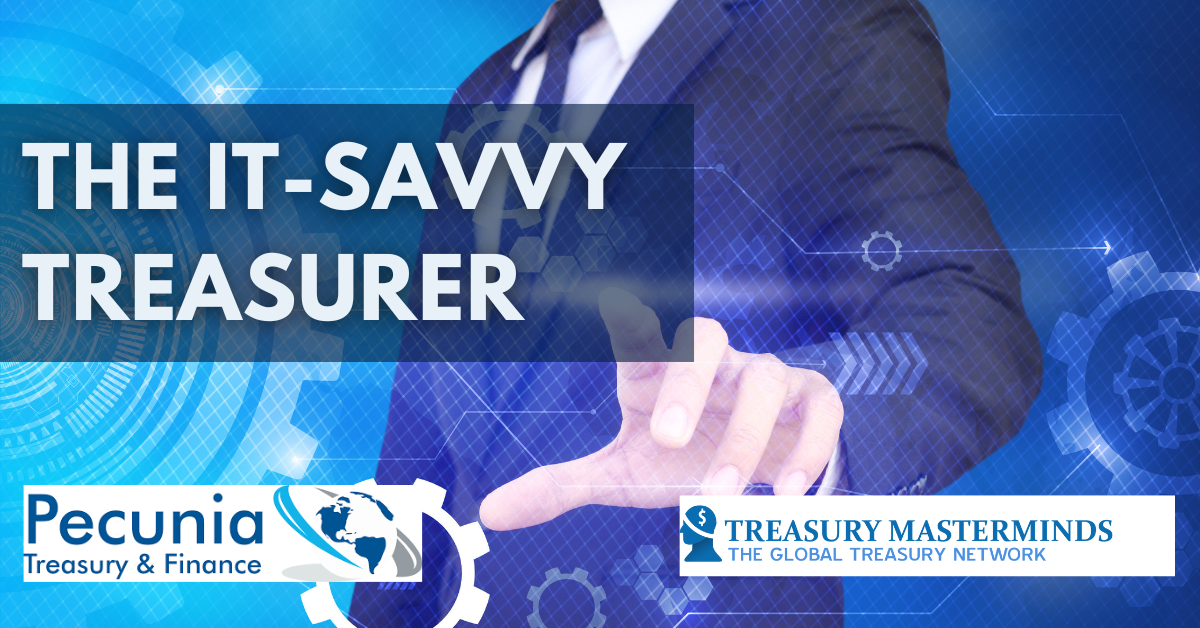
THE IT-SAVVY TREASURER
This article is written by Pecunia Treasury and Finance We cannot switch on the news without hearing about technological advancements that, supposedly, make our lives easier, better, or smarter. We all embrace them, get used to them, and cannot do without them anymore. Sometimes we think back to the time before these advancements and cannot imagine how we lived without them. The same applies to the Treasury. I am 35 years old; my experience in treasury was always linked to IT. I sometimes hear stories from older treasurers who worked without computers, later tabulating or punching cards, and still managed to do a good job in their field. Of course, times have changed; information is faster than it is these days, as is the need to process it. We all had to embrace the new technology. In this blog, I will try to analyze the link between IT and the Treasury and try to make predictions about the future, or at least where I wish the future would go (in Treasury terms). Payments In the old days, payments were a manual process, with people entering them into the banking system or sending them to the bank via fax. Nowadays, we link our ERP system with the banking system and have a batch file automatically added to the bank. With bulk payments, a payment hub can be used, which will make the whole process bank-independent, fast, and cheap. If wanted and needed, the whole process can be made straight-through by automating it from creating a payment to approving it. The future will make payments even faster (instant payments should be possible in the Sepa region from November onwards), cheaper, and more bank-independent (PSD2 regulation allows non-banks to link with your bank and provide payment services). Maybe we will be using our Facebook account for payments sooner or later. Bitcoin could be an alternative payment currency and/or be used to hedge non-deliverable currencies (to achieve this, volumes need to increase significantly). Risk management An important part of the treasurer’s work is risk management. Hedging FX, interest rates, and commodity prices is daily business for a treasurer. Doing the deal is easy; doing the right deal is more difficult. A treasurer can only hedge correctly if he knows what he is hedging: exposure. Knowing the exposure information of the business is key. The reason for the exposure originates in sales (FX) or procurement (FX and commodities). These departments need to be aware that the actions they take might have consequences for the treasurer, and therefore the treasurer needs to have some information. I have been at companies where sales were daily, generating a lot of USD exposure at a EUR company. They were supposed to let finance know about positions. Often, this was done at day’s end or forgotten and done a day later. Result: an exposure to USD without the treasurer knowing it; a risky position. IT helped to fix this. Sales entered a deal in a program, and the relevant FX exposure was automatically shared with the treasurer via an API to the Treasury Management System. The treasurer could decide directly whether he needed to hedge or not and even aggregate deals to get better rates at the bank. For small deals, a link was set up with an FX trading platform to STP them at the best rate. The future of risk management will be even more automated within the company (internal), but also with connections to banks and risk solution providers. Prices are becoming more transparent due to the fact that bank-independent solutions are available that compare prices in real time. Risk management sales are becoming less of a bank business. Brokers are having fewer hurdles to enter the market, due to IT platforms in the cloud. Why pick up the phone and call your bank for a EUR/USD quote when you can compare prices via an online platform and directly trade them? Often, you don’t even have to settle via your own bank accounts, but you can have it directly sent to your customer or supplier. For trade finance, blockchain will become the new standard. The financing and shipping of commodities is a rather paper based process that is inefficient and slow. Blockchain could automate and improve speed massively. The challenge to achieve this is big as there are many parties involved, but initiatives have started, so the future is beginning now. Information As the above examples show, information is key to a treasurer. Even more so, as the Treasury is often a small team and most of the information comes from other departments. To get this information, the treasurer can use several nice IT solutions. The ERP system helps, but the Treasury needs to know where to find the information. A treasury management system is often used to sort all treasury-related information. TMS can link with ERP systems or other systems to gather information. The TMS will sort this information so that the treasurer is well informed and can make decisions. When I started in Treasury 10 years ago, the market for TMS was small; systems were expensive and limited in use (payments only, FX only, etc.). Nowadays, a TMS does not have to be expensive anymore. A SME (small or medium enterprise) could use it to upgrade their Treasury information. Most TMS can be used for all aspects of treasury (cash management, risk management, corporate finance, guarantees, etc.). This will give the tech-savvy treasurer an edge. The treasurer with the most information can make the best decision. In treasury, taking decisions while being well-informed often means either cost savings (e.g., a better cash position, lower working capital) or lower risk. The IT-savvy treasurer contributes to an optimally functioning company; they should be considered a business partner; he knows your cash position, your risk position, and your balance sheet, hopefully in real time at all times. Join our Treasury Community Treasury Masterminds is a community of professionals working in treasury management or those interested in learning more…
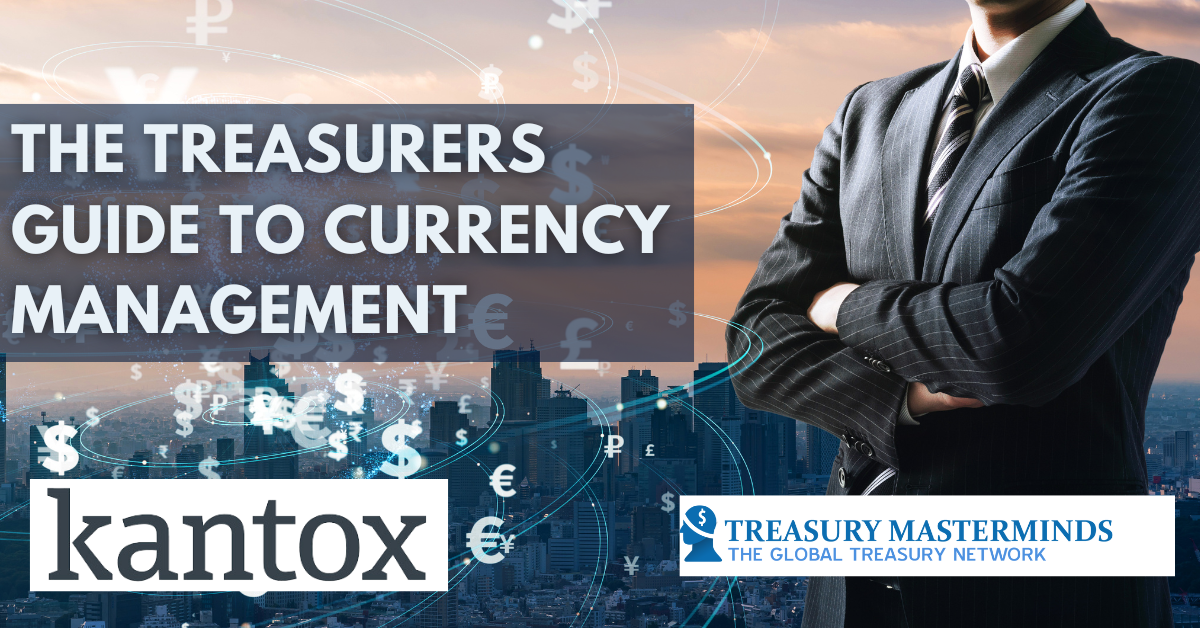
The Treasurers Guide to Currency Management
This article is written by Kantox In our most recent episode of CurrencyCast, titled “The Treasurers Guide to Currency Management,” the hosts of the Corporate Treasury 101 podcast, Guillaume Jouvencel and Hussam Ali, interviewed Agustin Mackinlay, our host, to dive deep into the world of currency management and the crucial role it plays in corporate treasury. Currency management goes beyond currency risk management and encompasses pricing with exchange rates, risk management, and the execution of foreign currency payments. In this blog post, we explore the highlights of this episode and provide a glimpse into the fascinating world of currency management. Understanding Currency Management Guillaume and Hussam started the conversation with a very important concept, which is currency management. What is the main difference between currency risk management? This is the very core of our solutions, and we wanted to share how currency management is approached at Kantox. It is a powerful tool for treasurers and CFOs to add more value to the firm. Currency management vs currency risk management Currency management is often mistaken for currency risk management. While the latter focuses on mitigating the risks associated with exchange rate fluctuations, currency management encompasses the entire workflow of dealing with foreign currencies. This workflow starts with pricing in another currency, managing the risks involved, and concluding with executing foreign currency payments and collections. On the other hand, the process of risk management is usually understood as executing hedges. At Kantox, we understand currency management from a broader perspective, and we believe that it is possible to manage the underlying risk in currencies without executing hedges. It is an opportunity for treasures to act more as strategic players within the company and enable the firm to take advantage of those currencies to enhance the firm’s competitive position and secure the budgeted profit margins. The Need for Currency Management Then the discussion went on about where the need for currency management originated. In today’s globalised world, thousands of companies are exposed to currencies in their daily operations. This exposure can be commercial or financial in nature. Commercial exposure occurs when companies buy or sell goods or services in foreign currencies, while financial exposure arises from activities like making loans in foreign currencies. Currency management becomes essential for companies to price products, manage currency risks, and handle payments and collections effectively. Instruments Used in Currency Management In the episode, some of the main instruments used in currency management were also presented to give an overview of what treasurers and finance professionals would be working with. These instruments are: Some others were also mentioned, such as future contracts. Different Industries, Different Needs Later on, Agustin highlighted another consideration when it comes to currency management. It is also important to understand how currency management impacts companies differently depending on the industry. Some of them have unique requirements when it comes to pricing characteristics. For example, the travel industry, with its dynamic pricing and constantly changing exchange rates, requires automated solutions to manage currency exposures effectively. On the other hand, industries that maintain stable prices for longer periods may adopt different strategies. Main Actors of Currency Management And who are the main actors involved in currency management? Corporates are the primary users of currency management solutions as they face currency fluctuations in their transactions. FX dealers act as intermediaries between corporations and banks, facilitating foreign exchange transactions. Financial institutions play a crucial role in FX markets, mediating between buyers and sellers and handling a significant portion of the daily transaction volume. Technicalities of Currency Management & Automation The pre-trade and trade phases of the FX workflow To help finance professionals understand the whole currency management process, Agustin gave a short summary of the three phases of the workflow: pre-trade, trade, and post-trade. He put the emphasis on how complicated the process of exposure gathering is in the pre-trade phase. Gathering exposure refers to collecting and capturing data related to currency risks. This step is crucial in identifying and quantifying currency exposures to implement effective hedging strategies. That exposure needs to be captured in its entirety and in a timely manner in order to hedge it. This point is rarely discussed in financial textbooks. Yet, in real life, it is easier said than done. The relevant information can come from different company systems. Subsidiaries may not be quick to submit it. Yet it is a critically important process in currency management. Then, discussing the trade phrase, he touched on the next step, which is exposure processing. Once exposure data is collected, it needs to be processed according to predefined rules. This includes aggregating individual exposures into positions and determining the appropriate hedging program to manage the risks effectively. The entire currency workflow, consisting of the pre-trade, trade, and post-trade phases, can be automated. We call this ‘end-to-end’ automation. We recently discussed in our podcast the concept of ‘discrete’ vs. ‘end-to-end’ automation. While the former relates to a particular problem, the latter refers to an entire process. How can this process be automated? The currency management workflow is a multifaceted process that can be automated. In the episode, the concepts of ‘discrete’ vs. ‘end-to-end’ automation were discussed to explain why we’re big fans of ‘end-to-end’ automation at Kantox. While the former relates to a particular problem, the latter refers to an entire process. With this example, it became clear what the advantages of choosing to automate the whole FX workflow were. If a treasurer manages to save a few dollars, euros, or pounds on trading costs because the trade phase was automated, that’s fine. Except that, if there is no proper integration with the pre-trade phase, that can be a pretty serious problem. As for the specific technology that helps to automate currency management, by far the most important connectivity comes from Application Programming Interfaces (APIs). An API is a software-to-software interface that allows two or more computers to communicate with each other. And this connectivity can be leveraged across the whole workflow—in pricing, in hedging, and in reporting. This way, Treasurers and CFOs don’t have to spend excess time…
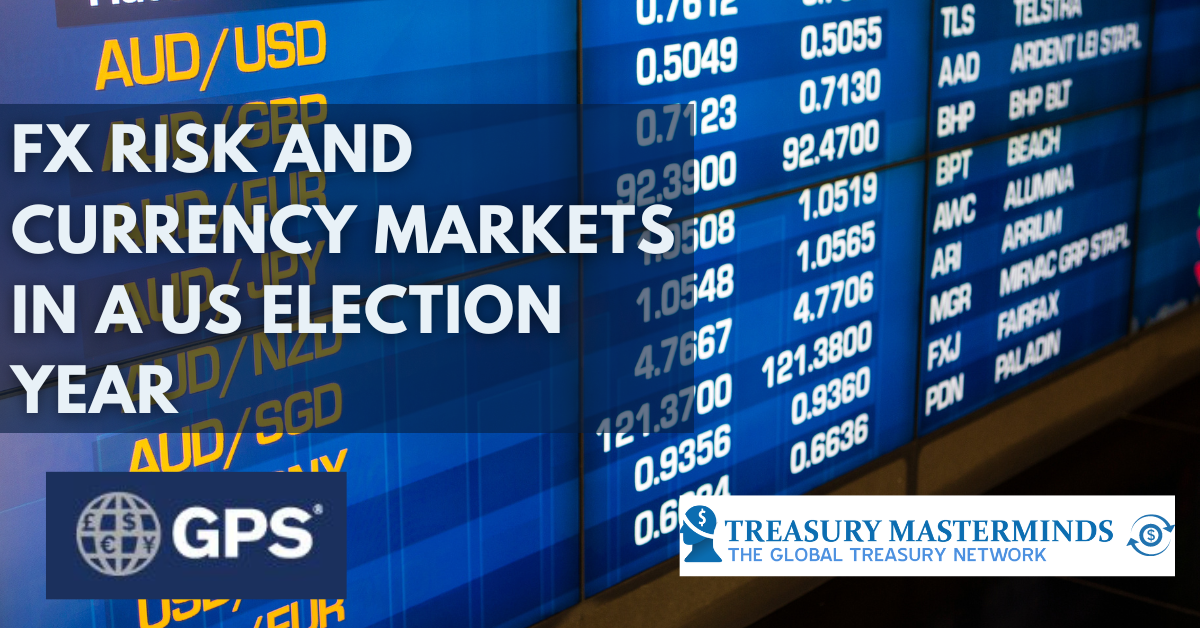
FX RISK AND CURRENCY MARKETS IN A US ELECTION YEAR
This article is written by GPS® Capital Markets Download Article Once every four years, the world witnesses a highly anticipated event: the US presidential elections, yet the influence of these elections on currency markets and associated FX risk begins well before November 5th. This holds especially true in 2024, which will see both current US President Joe Biden and Donald Trump, the probable Republican Party nominees, each seeking a second term, and where both candidate’s foreign and economic policies are well known. Historically, the US presidential election has been a catalyst for heightened volatility in FX markets. While we know past performance is no guarantee of future outcomes, there is much to be gained by observing the impact of the past three presidential elections: 2020 Biden vs. Trump, 2016 Trump vs. Clinton, and 2012 Obama vs. Romney. In this article, we will analyze the impacts and risks of each candidate by currency and recommend the best ways to hedge exposures that are open. IMPORTANT DATES First, let’s begin by looking at a timeline of important dates extending into the coming year that will likely have currency market-moving effects. Each date indicates a period of uncertainty—a potential driver of FX market volatility. By staying informed and adapting your approach to FX risk as the election year progresses, you can effectively hedge your exposures and protect against FX risk. THE CANDIDATES If current polling persists, the 2024 election will be the result of a Biden-Trump match. However, there is much speculation about the outcome of former President Donald Trump’s legal scrutiny and its effects on his candidacy. The front-runner for the Republican Party has a series of court dates from January through May, and their outcomes have the potential to change the landscape of the election significantly. If the present election probabilities hold true, with Joe Biden facing off against Donald Trump as the most probable scenario, then our focus will be on global trade negotiations and the impact a possible Trump win would have on tariffs. FX RISK DUE TO CURRENCY MOVEMENTS ON ELECTION YEARS USD In our analysis, we employed seasonal charts to evaluate the performance of the USD during election years. Since the election takes place on the Tuesday following the first Monday in November, dates can vary. Our observations encompassed daily movement between October 28th and November 25th of each respective year. The chart of the Bloomberg US dollar index illustrates that during this period, the USD exhibited a 3.8% increase in 2016 when Trump was elected, a 2.2% decrease in 2020 when Biden won the election, and a relatively stable movement in 2012 when Obama was reelected. This represents a 6% swing in the dollar’s value between the two presidential candidates. Source: Bloomberg US dollar index percentage movement, election years 2020 (yellow), 2016 (orange), and 2012 (blue). MXN The Mexican peso could be the currency that falls the most in the event of a Trump victory—in the month when he was elected, the USD appreciated 8.1% against the peso, whereas it depreciated 6.2% following Biden’s victory. Considering that Mexico is the United States’ largest trade partner, with a total volume of $736 billion in total trade transacted in 2022, the election will unquestionably present many opportunities and challenges for this currency. RELATED ARTICLE: Could You Be Managing Your EM FX Risk Better? Source: Bloomberg USD/MXN percentage movement, election years 2020 (yellow), 2016 (orange), and 2012 (blue). CNY A Trump victory could have a similarly negative impact on the CNY. During the month of Trump’s election, the USD appreciated 2.4% against the yuan. In contrast, the more sympathetic Biden saw the dollar depreciate by 2.5% in 2020. It’s worth noting that China is the United States’ third-largest trade partner, with $715 billion in total trade transacted in 2022. Source: Bloomberg USD/CNH percentage movement, election years 2020 (yellow), 2016 (orange), and 2012 (blue). JPY The Japanese yen could equally feel the pinch, surpassing the broader dollar index under a Trump win. During the month of his election, the dollar appreciated 8.1% against the yen, whereas in 2020, Biden saw the dollar appreciate 0.1%. Japan is the fourth-largest trade partner of the United States, with $239 billion in total trade transacted in 2022. Source: Bloomberg USD/JPY percentage movement, election years 2020 (yellow), 2016 (orange), and 2012 (blue). AUD The Australian dollar is a higher-risk currency that has the potential to exhibit greater movement compared to other major currencies, as indicated by its elevated implied volatility. In the month when Trump was elected, the Australian dollar experienced a 2.1% depreciation against the US dollar, whereas when Biden secured the victory, the Australian dollar appreciated by 4.6%. Source: Bloomberg AUD/USD percentage movement, election years 2020 (yellow), 2016 (orange), and 2012 (blue). Note that the rate is inverted compared to the other pairs. MONETARY POLICY The market is currently factoring in the likelihood of some aggressive interest rate cuts from the Federal Reserve. So, it’s worthwhile to examine the behavior of the cash rate in election years. The chart below illustrates the Fed Funds rate, with each election year represented by a different color. There doesn’t appear to be a clear pattern or consistent trend, as each election year corresponds to vastly differing points in the economic cycle. This may serve to validate the independence of the Federal Reserve. 2020: The Republicans lost power to the Democrats; rates were cut early in the year post-COVID to 0.25%. 2016: The Democrats lost power to the Republicans; rates remained at 0.5% throughout the year before increasing a further 0.25% after the election. 2012: The Democrats remained in control, with rates remaining at 0.25%. 2008: The Republicans lost power to the Democrats; rates moved lower in the backdrop of the Global Financial Crisis. 2004: The Republicans remained in control, with rates moving higher in the later part of the year. Source: Bloomberg Fed Funds Upper Target across the last five elections. CHANGES IN THE OPTIONS MARKETS The magnitude of risks, as well as the potential changes in the FX markets, can be observed as higher implied…